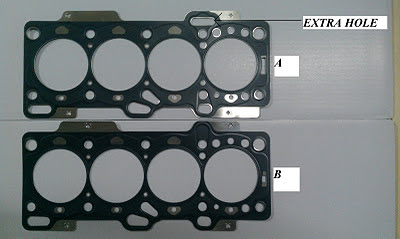
The VR engine is a 3.8 L V6 piston engine from Nissan. The engine is the product of further development of the widely successful VQ engine series, in particular drawing experience from the JGTC racing engines as well as Nissan's VRH engines from vehicles such as the Nissan R390 GT1.
VR38DETT
This 3.8L twin-turbo DOHC V6 engine is currently only used in the Nissan GT-R. Fully dressed with the first set of catalytic converters, turbos, turbo outlet pipes, the motor weighs 608 lb (276 kg). It is currently the only version of the VR engine in production.
The engine sports 24 valves controlled by dual overhead camshafts with variable valve timing (intake only). The block is cast aluminum with 0.15 mm (0.006 in) plasma-sprayed cylinder liner bores. The turbine housings for the two IHI turbochargers are integrated into the exhaust manifolds to decrease weight and bolster vehicle balance. The engine also sports a pressurized lubrication system controlled thermostatically.
The VR38DETT is hand assembled in a special clean-room environment at Nissan's Yokohama facility by specially trained technicians. Each engine is assembled by only one master technician("Takumi").
Other pertinent features of the VR38DETT include:
-Continuously Variable Valve Timing Control System (CVTCS) on intake valves
-Aluminum cylinder block with high-endurance/low-friction plasma-sprayed bores
-Nissan Direct Ignition System
-Iridium-tipped spark plugs
-Electronic drive-by-wire throttle
-Pressurized lubrication system with thermostatically controlled cooling and magnesium oil sump
-Fully symmetrical dual intake and low back-pressure exhaust system
-Secondary air intake system to rapidly heat catalysts to peak cleaning efficiency
-50 State LEV2/ULEV
Source: http://en.wikipedia.org/wiki/VR38DETT
Ok, now is the question, where do the owner of this GT-R in Malaysia source their engine gasket?






